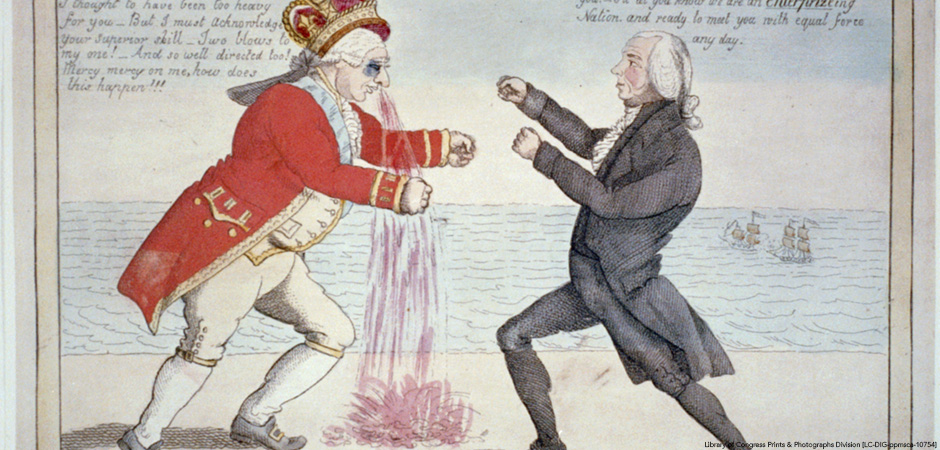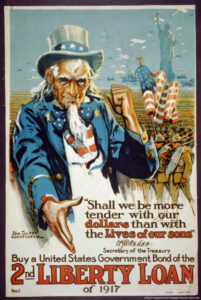
Uncle Sam is a familiar character used to represent the United States as a person. Dressed in red, white, and blue, his image brings to mind thoughts of American patriotism. He is used as a stand-in for the United States in political cartoons and advertisements. Uncle Sam’s origins can be traced back to the War of 1812. However, an earlier personification of the United States named Brother Jonathan dates to an earlier time: the Revolutionary War period.
The term Brother Jonathan was used by the British as an insult to make fun of the colonial New Englanders as unsophisticated country bumpkins. Brother Jonathan was sometimes used to refer to the governor of Connecticut, Jonathan Trumbull, who sided with the patriots in the Revolutionary War. Gradually the British taunt was adopted by the victorious patriots as a symbol of pride for the newly independent young country.
The illustrations of Brother Jonathan were very different from later drawings of the stately Uncle Sam. The British viewed the patriots as rebellious upstarts. In these illustrations, Brother Jonathan displayed an irreverent personality. (Irreverent means lacking respect and seriousness.) He was youthful, wearing ill-fitting clothes, and sometimes shown wearing a top hat.
Brother Jonathan Versus John Bull
The British had their own character who personified their national spirit in the stout John Bull. Brother Jonathan and John Bull appeared together in many political cartoons of the time. Both characters represented the commoners of their respective countries.
Brother Jonathan is shown as a trickster who is smart, funny, and often does not play by the rules. African and Native American cultures also have similar trickster characters in their traditions. Tricksters always find a way to outwit their rivals. Brother Jonathan, for instance, was sometimes shown fighting with or stealing from John Bull in a manner that made Bull look foolish or weak.
The Evolution of Brother Jonathan
Different artists illustrated Brother Jonathan in a variety of ways over the years. Though youthful, Brother Jonathan took on some of the costume features that later came to be associated with Uncle Sam, such as the striped pants and the top hat.
For the period between the War of 1812 and the Civil War, both Brother Jonathan and Uncle Sam appeared in political cartoons. While Brother Jonathan represented the common American citizen, Uncle Sam portrayed the federal government.
Brother Jonathan Fades in Uncle Sam’s Shadow

After the Civil War, Uncle Sam became a more popular symbol for the United States, and the character of Brother Jonathan faded from use. Some suggest that Uncle Sam’s appearance was influenced by the popularity of President Abraham Lincoln. Like Lincoln, Uncle Sam already wore a top hat, and a beard was added to his image.
The United States was no longer a new country. Uncle Sam’s maturity and patriotism were considered a more fitting representation for the United States. Today, the portrayal of Uncle Sam that most people are familiar with is the U.S. Army recruiting poster created in 1917 by James Montgomery Flagg. The government printed four million World War I posters and used the image again for World War II to persuade Americans to join the military.
